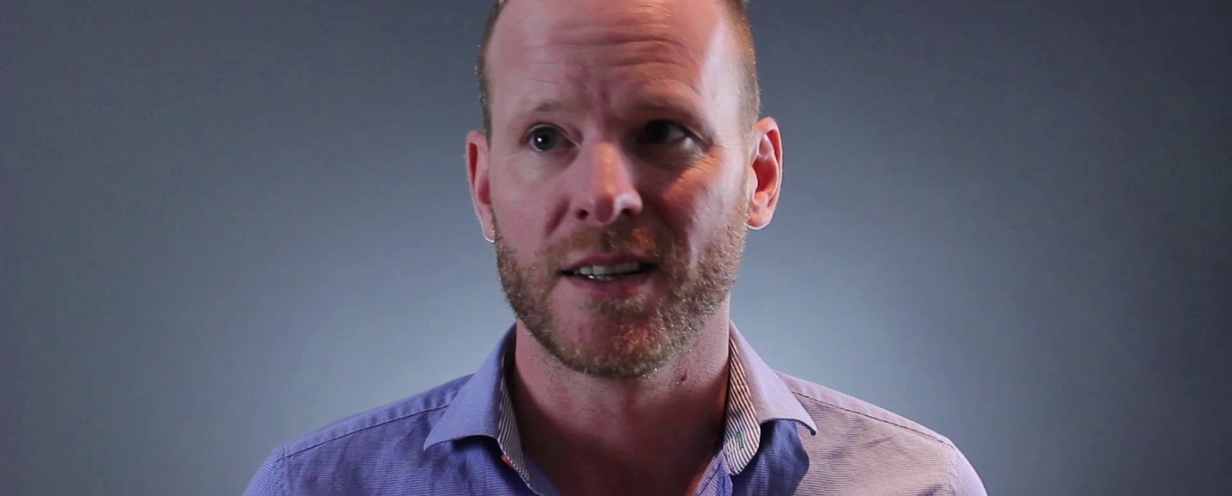
Landing Page Q&A: Ask Me Anything with Oli Gardner

In this exclusive Q&A interview, Oli Gardner, co-founder of Unbounce, answers questions about landing page design, conversion optimization, and how he incorporates research into his design process. Oli has seen more landing pages than anyone on the planet, and he shared some of his expertise and optimization tricks in this “Ask Me Anything” on-demand webinar.
Q: If you could only have one of these three things above the fold, which would you choose: a form, the unique selling proposition, or an explainer video?
A: It has to be your USP, your value proposition. Without that, you have nothing.
You can probably only anticipate that about 10% of visitors are actually going to watch your video. It’s a bit shocking, but that’s often where the number lies in the tests I’ve run. So your page needs to stand alone without that. We’re actually testing an explainer video right now on our homepage and it’s really hard to find the right balance between getting the right number of views and the interruption you’re giving by placing it in the design of the page. It’s a real balancing act.Clarity is probably the single biggest factor in conversion.So if you can’t communicate clearly and succinctly as soon as someone comes to the page, then you’re going to lose a lot of people.The form option here is really interesting
Right now I’m exploring something I call Form First Design; essentially you design your form experience as if it’s the only thing on your page. If it can’t stand alone and communicate the necessities or the point of your page, then it’s not ready. It should have its own little headline, the benefit of why you should care about the form (why you should fill it out), and your CTA. And then you can just add in other elements around that.Q: How and where does research fit into your design process?
A: There’s a common phrase: you don’t know what you don’t know.
You should be uncovering some of what you don’t know that you don’t know. But at the same time, it can be difficult to figure out how to go about finding those things.Something I often say to people is that qualitative insights are cumulative. By that, I mean once you start asking questions, the answers inevitably lead to more questions. The secret to learning from your visitors and your customers is just to start asking questions.Sometimes a broad question can help you find your way to the narrow, more poignant questions—which ultimately get to the fundamentals that are going to affect your conversion rates.But you really just need to start the process of asking
Just to give an example of how this works, the landing page templates page on our site shows all the templates that we have. I used Qualaroo to pose a very simple question: What do you think of our templates?Super open-ended, starting wide open. After about 1,700 responses, I saw three primary recurring questions:- How much are they?
- Where can I download them?
- Can I use them in WordPress?
There was a lack of context
You can’t do any of those three things. You can only use them inside the landing page builder, but people didn’t know. A lot of people come through organic search; they were searching for templates and didn’t understand how it all worked. So to answer that question, we designed a graphic that shows our templates inside the template library, inside the app, and then one being added inside the page builder.That’s an example of context of use
You’re demonstrating visually, whether it’s an image or a video, how this object in question will actually be used in practice. That again is getting to clarity in context. So we tested that and got an increase of 43% in new signups for people who saw that page, which is insane. Looking at the entire year, that was giving us about 1,440 extra signups. And at the average lifetime value of our customer, which was somewhere around $750, the math came to just over $1 million.Q: Can you talk about the value of testing color changes?
A: Yes. Get over it people, stop doing that.
Let’s start with buttons:Button color is irrelevant, it’s contrast that matters.[clickToTweet tweet="Button color is irrelevant, it’s contrast that matters." quote="Button color is irrelevant, it’s contrast that matters."]There’s this famous test where a red button outperformed a green button. But if you look at the context of the test, the rest of the page was also green. The dominant color was green, so the green button didn’t stand out. As soon as some contrast is applied with the red button, boom!You’ve got to think in terms of contrast, not in terms of color
And try to be consistent with your color choices. If you design a landing page—and this gets into usability and conversion principles—give purpose to your color choices. If something’s interactive, give it one color so that you can look around the page and know how the page works in a very simple way. Don’t mix and match things and use tons of colors all over the place because people can’t ascribe any meaning to it.Q: Can you describe your process for testing landing pages?
A: Definitely not one-off.
Building research into your process is one of the most important things. That way you’re building A/B tests based on an understanding of what might be broken which allows you to build solid hypotheses.Keep a record of your tests
One of the most critical parts of testing is keeping a record of your tests—the outcomes and what you learn from them. Otherwise, you may run a test in the future that undoes something that had a positive outcome before. If you don’t keep records of these things, you might break what you’ve already achieved. This is really dangerous.Also, you might repeat tests that didn’t work; then you’re just wasting your time.Also, you want others to be able to come in and run a test without having to be inside your brain or your memory. What if something happens to you, and all of your knowledge is gone? Someone’s going to start repeating all these failed tests.Q: What’s the best way to handle a “Thank You” page once someone registers for gated content? Should they direct people to other content, just say thank you, or some combination of the two?
A: Never just say thank you. That’s a massively wasted opportunity.
They’ve just demonstrated that they like you and trust you—they gave you their email address because your content looked really interesting. So you’ve got to ask for something more.But don’t be too aggressive
On the registration confirmation pages for the webinars that we run, we were initially saying, “Hey, do you want to sign up for a free trial of Unbounce?” That’s too much. They’re just looking at content at this point. So it had a very, very low conversion rate. But then we changed it to say, “Hey, thanks for registering for the webinar. You might also be interested in our blog.” And we also included a short value proposition—daily conversion tips, something like that.Out of 2,500 people who registered for one of those webinars, 1,100 of them then subscribed to the blog. That’s 40%, just because we asked. So you have to take advantage of that.And that’s where you could put social shares as well
Don’t put them on your actual landing page. Put them on the confirmation page when someone is more likely to share. I’m not going to share any landing page most likely before I know what the quality is like.The final word
In our on-demand webinar, Oli Gardner answered the audience's questions about landing pages, conversion rate optimization, and user experience. He gives his brutally honest answers to these questions and more:- Is the fold still relevant?
- How can a marketer learn how to design great landing pages?
- Should a landing page include the main site navigation?
- What do we need to be doing differently on mobile landing pages?
- What are the new trends in landing pages that marketers should implement?





